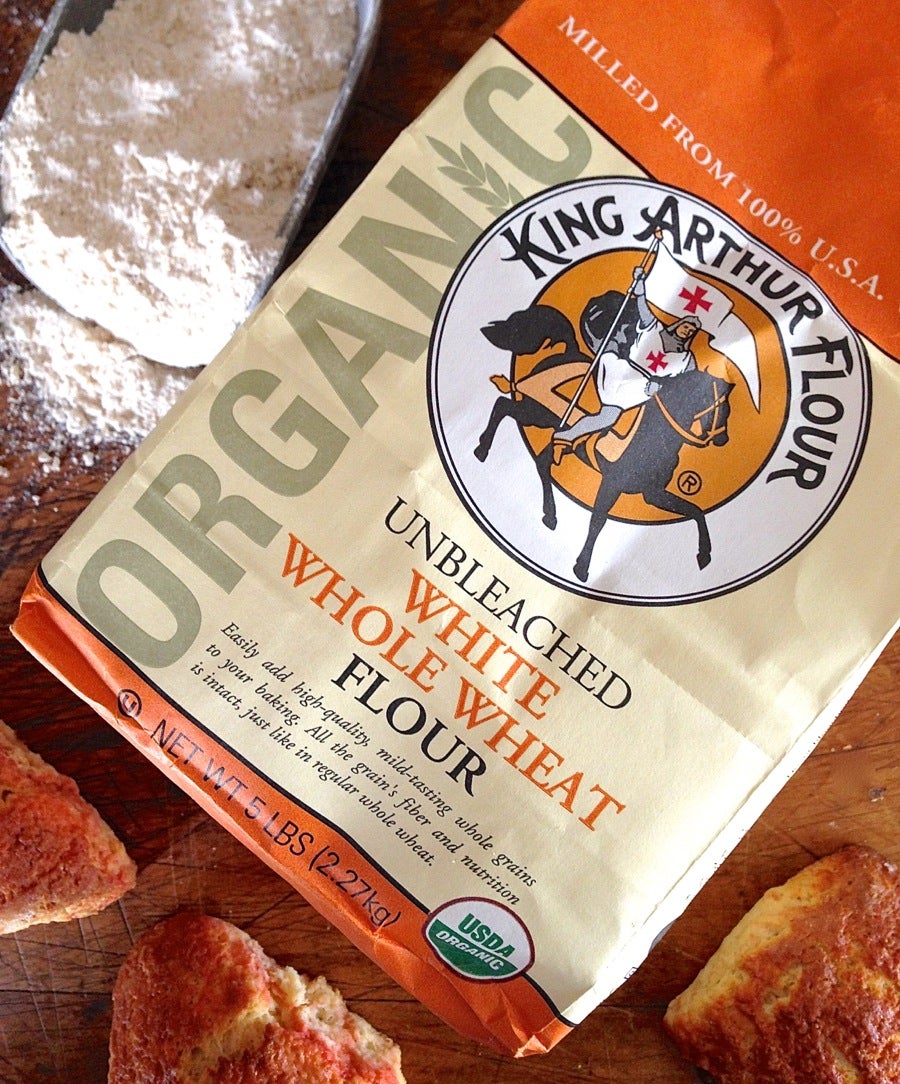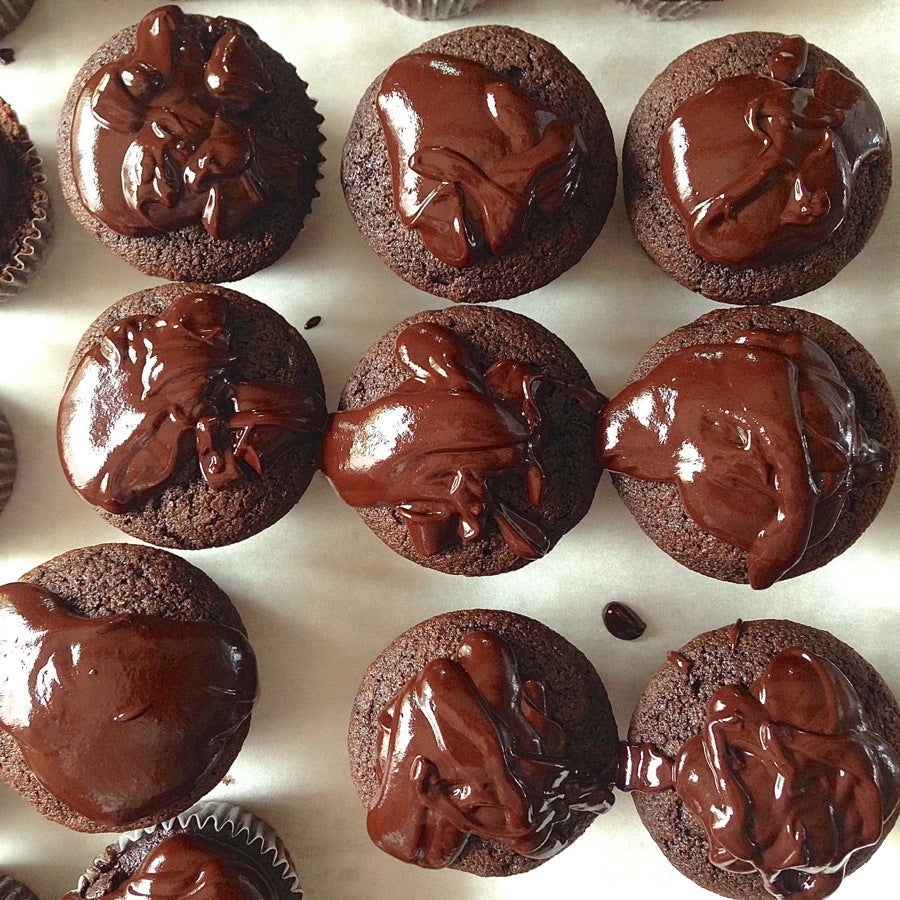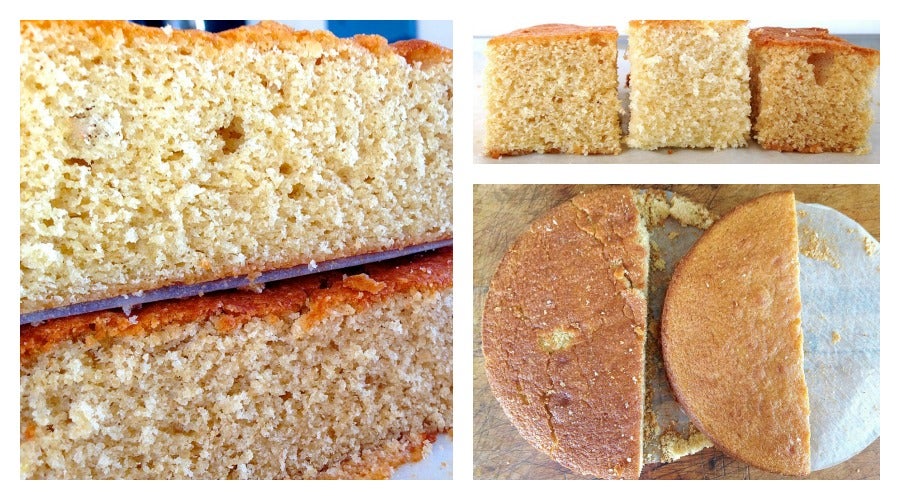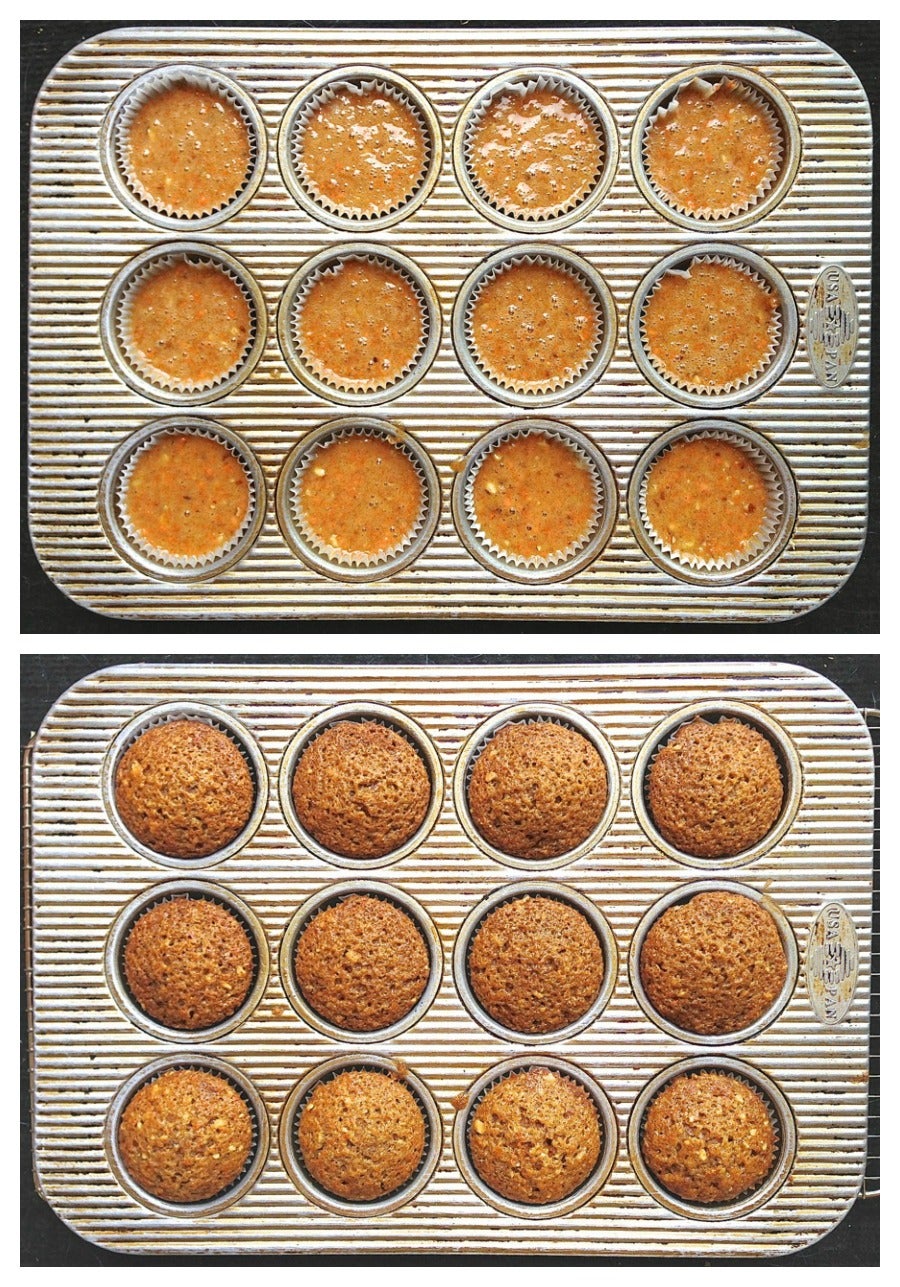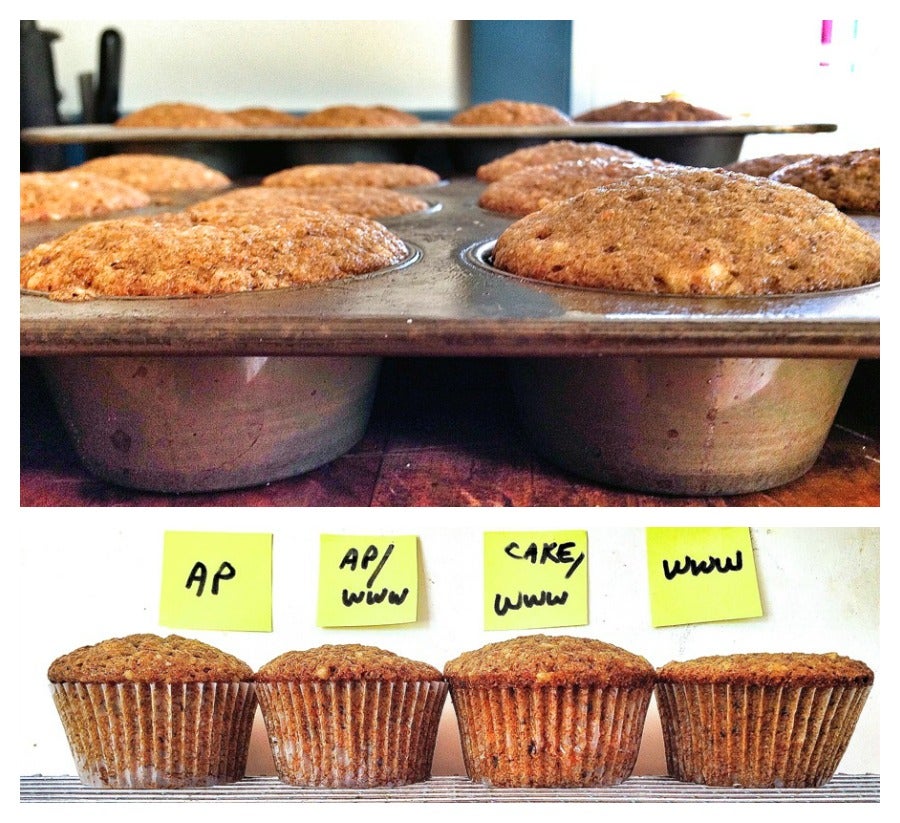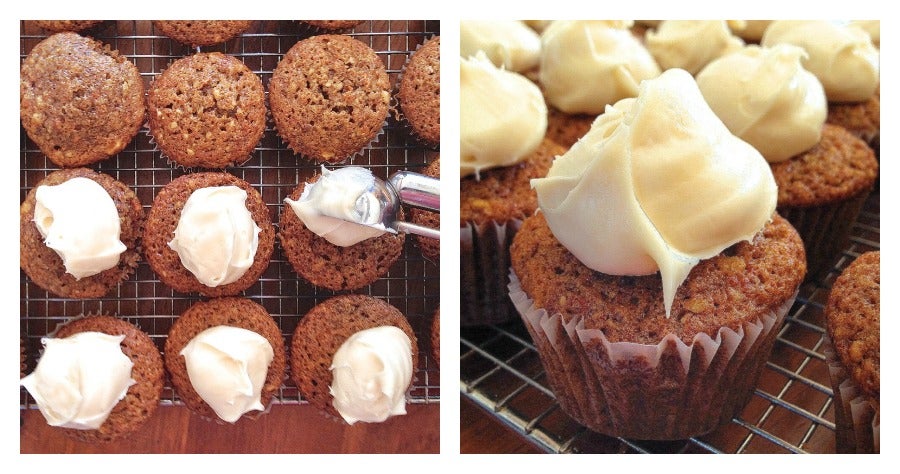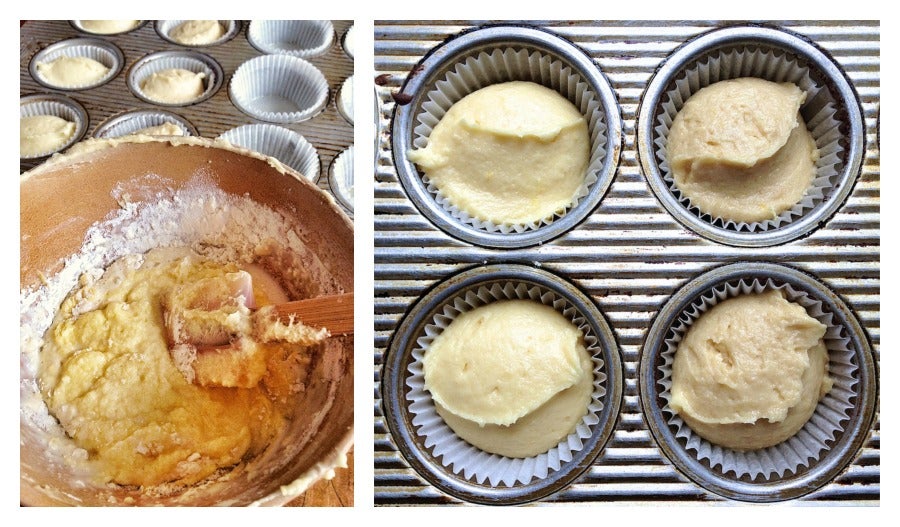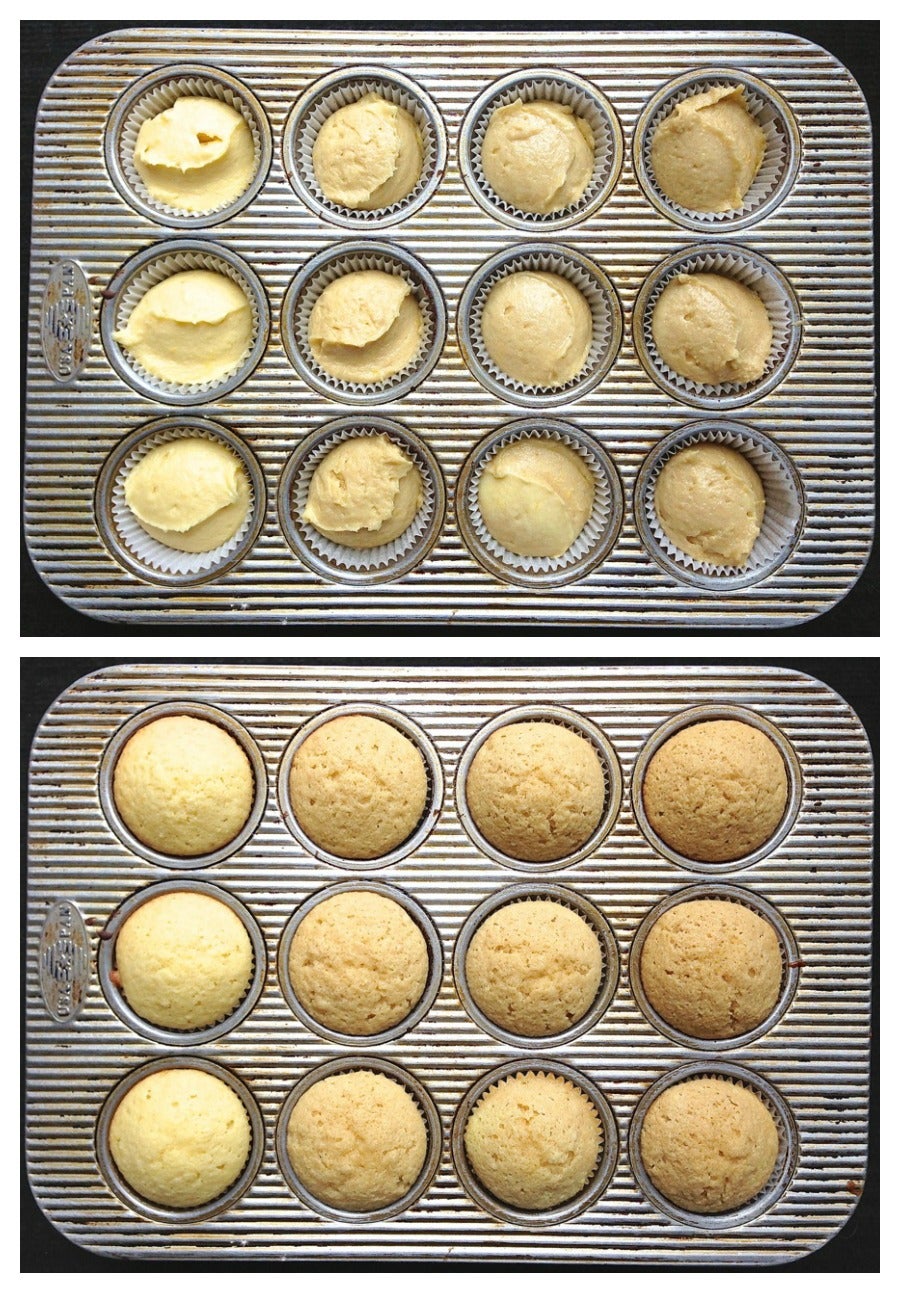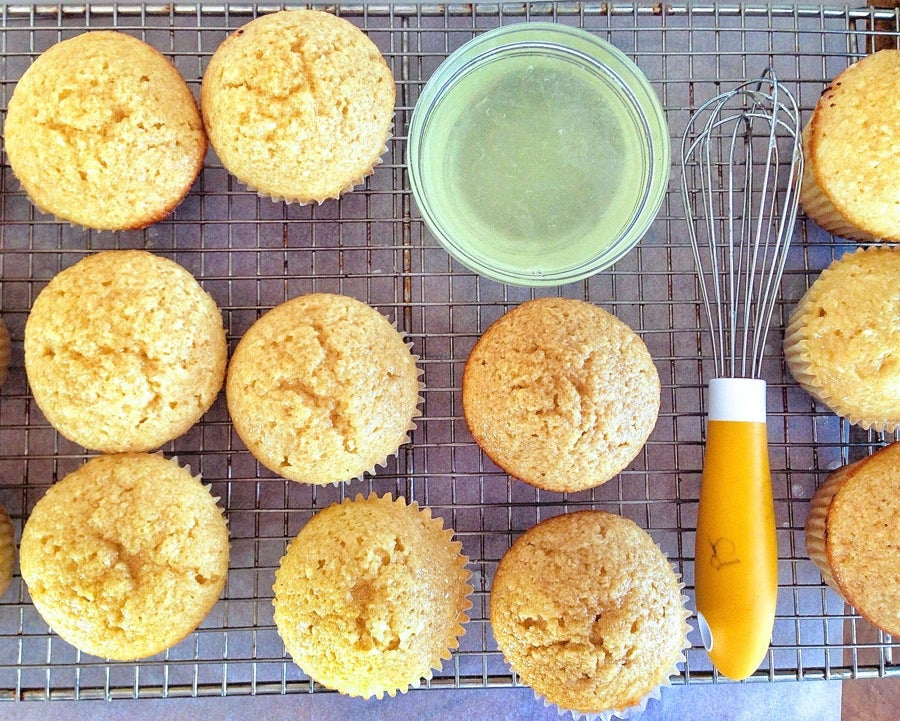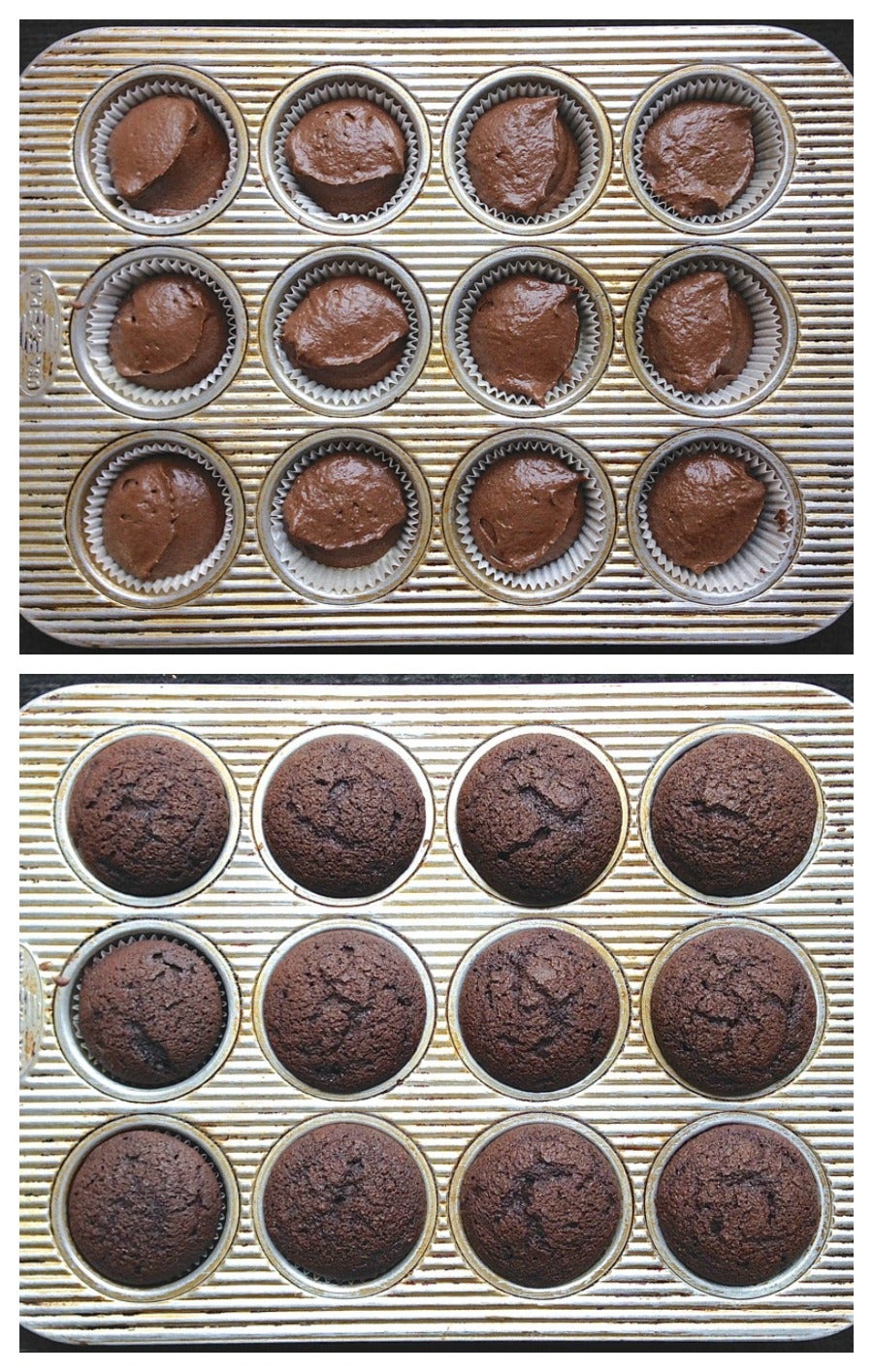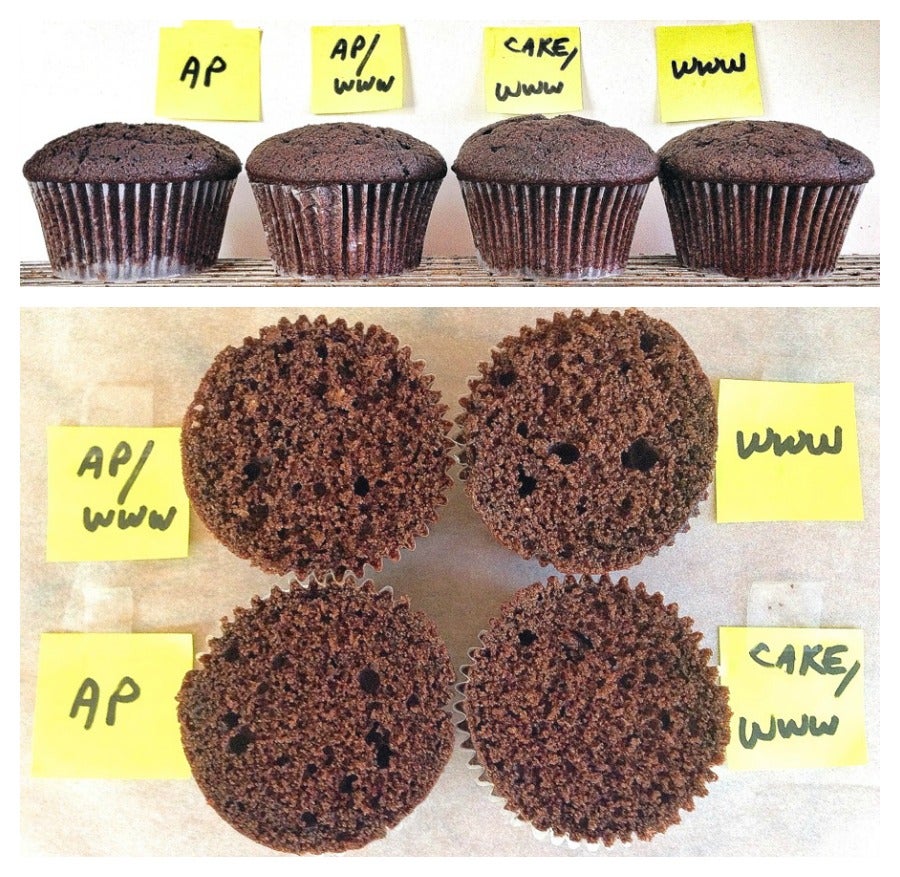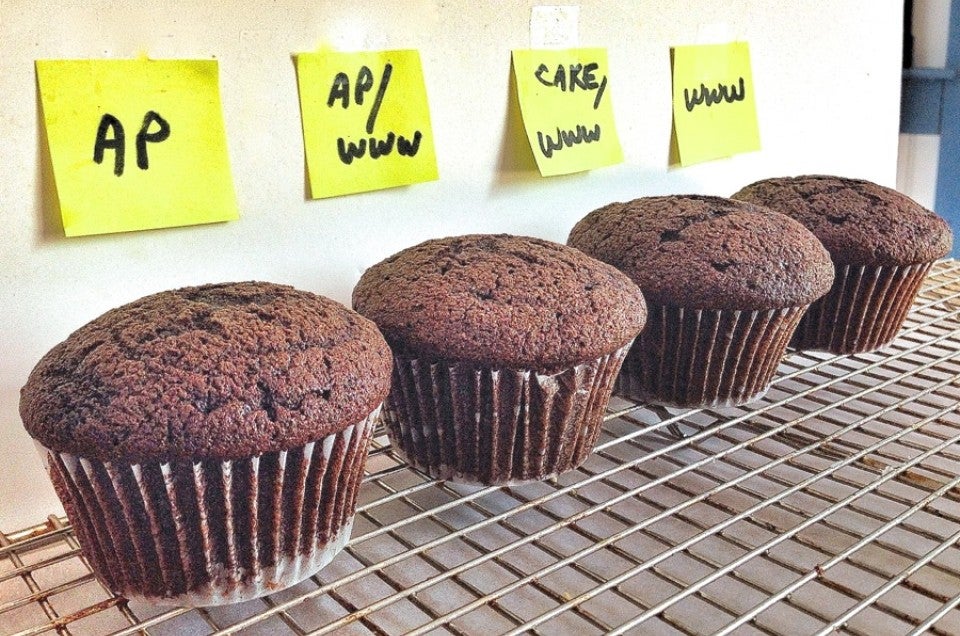


And now, for our grand finale, the magic trick you've all been waiting for:
With a wave of my magic wand, I'm going to turn yummy chocolate cupcakes into just-as-yummy WHOLE WHEAT chocolate cupcakes.
Well, actually, there's no magic involved here – revelation, perhaps, but nothing miraculous.
Unless you count the miracle of white whole wheat flour, which manages to skillfully walk the line between all-purpose (white) flour and whole wheat, combining signature attributes of both: white flour's ease of use and mild (read: neutral) flavor; and all of traditional (red) whole wheat's fiber and enhanced nutrition.
Pictured above is our organic white whole wheat; we also carry a standard version.
These cupcakes are whole wheat? Really?
Well, some of them are 100% white whole wheat (WWW). Some are half all-purpose (AP) flour, half white whole wheat; and some are 100% AP flour.
The point is, it's nearly impossible to tell which is which. Once I'd finished my tests and mixed them all up, there was absolutely no way to tell them apart.
And isn't that the goal, when you're trying to convert a recipe from all-purpose flour to whole grain?
Now clearly, chocolate cake benefits by its dark color, which hides whole wheat's deeper hue. But what about a simple yellow cake?
Here are some pictures of Plain & Simple Golden Cake, made with various combinations of white and whole wheat flour.
At left, that's 100% AP flour on the top; 100% WWW flour beneath it.
In the photo at upper right, the lineup reads 50% AP/50% WWW; 100% AP; and 100% WWW.
And at bottom right, a couple of half-moons: 100% WWW on the left, 100% AP on the right. You may be able to see in this picture that the 100% whole wheat cake has a slightly rough surface, and tends to crumble more easily than its white-flour counterpart. The bran, with its sharp edges, shreds the cake's gluten (the substance that holds baked goods together). Thus, a bran-packed cake might crumble a bit, especially when baked in full-size layers.
The solution?
Cupcakes!
So cupcakes it is, as I test substituting whole wheat flour for all-purpose in the following three types of cake: a dense, moist, oil-based carrot cake; a lighter, pound-cake type lemon cake; and a typical "cream the fat, sugar, and eggs, add the flour and liquid alternately" devil's food cake.
Let's start with the carrot cake.
I decide to use King Arthur's Carrot Cake Cupcakes, since it earns high marks from you, our readers.
Here are the various flour combinations I'm testing. The tests will be the same for all three recipes, so keep them in mind:
I begin by stirring together the batter – literally. This is one of those "stir it up" cakes: no creaming, no alternate additions of flour and liquid.
Bake the cupcakes – no difference in color.
A slight difference in rise, however. Notice how the cake flour/WWW cupcake rises similarly to the 100% AP one. And the 100% WWW cupcake (at left, in the top picture above) is rather flat across the top.

Texture-wise, another interesting (though somewhat expected) result: the cupcake made with cake flour, even though it's also 50% whole wheat, has the finest texture.
And how about the taste? All taste exactly the same: delicious. I love this recipe because it's not overly sweet.
Which makes it perfect for its crown of cream cheese frosting.
Next, let's move to a tougher challenge: a light-textured, light-colored cake.
One recipe for Lemon Bliss Cake cupcakes, coming right up!
I put together four variations of batter. The recipe calls for creaming the butter and sugar, beating in the eggs, then adding flour alternately with milk. I dutifully do just that – for each of the four batters.
I'm telling you, doing tests like this is not for the easily distracted. Luckily, my husband and dog disappear for the morning – blessed silence!
Notice the difference in color between 100% AP (left), and 100% WWW (right).
That color variation carries all the way through.
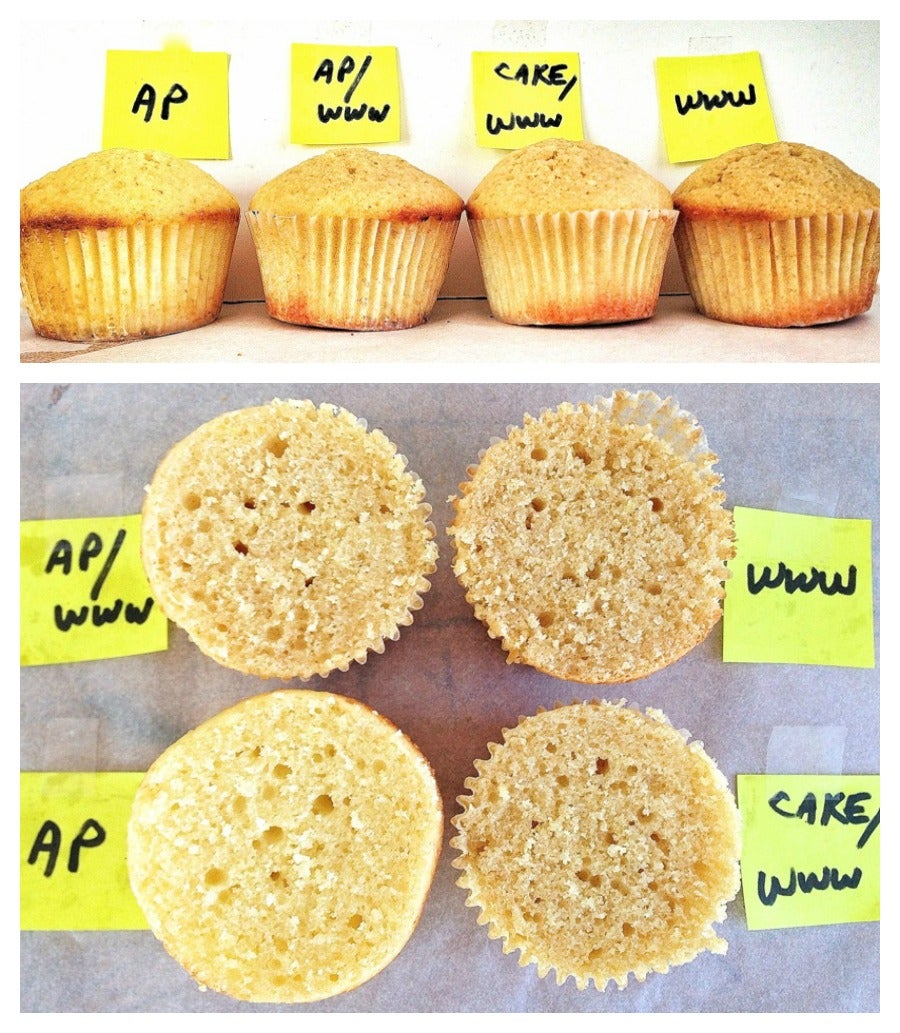 But the rise? No real difference.
But the rise? No real difference.
And the texture of all four is very similar, too.
The only difference? The slightly grainy "mouth feel" of the 100% WWW cupcake. Rather than being melt-in-your-mouth smooth, the bran gives it a bit of bite.
Lemon glaze is the perfect final touch. I dip the top of each cupcake into the glaze repeatedly – until it's gone, absorbed into the moist cupcakes.
And now, what we've all been waiting for: Devil's Food Cake, reincarnated as cupcakes.
This recipe, printed in our King Arthur Flour 200th Anniversary Cookbook, makes an old-fashioned, shortening-based cake. I figure it'll be a good test to see how well an older recipe takes to whole wheat conversion.
Four batters – like the lemon cake, made using the "creaming" method.
No noticeable difference in batter consistency, nor in rise during baking.
Nor in texture – though the cake-flour version might be a tad finer-grained.
Again, the 100% WWW cupcake has a detectable graininess; not unpleasant, just noticeable.
But heck, once you add that ganache on top – who cares?!
Wait a minute: where's the spongecake? The angel food?
I decided not to go there. Just like some words are best left unsaid, some recipes are best left unadulterated.
But hey, if you want to make an angel food cake with whole wheat flour, be my guest – and please let us know how it goes.
Me? I'll stick with my white-flour jelly rolls and angel food – and pick up some extra fiber in these cupcakes.
So, there you have it: the final installment in our White to Wheat, a Baker's Guide series. Interested in converting more of your favorite recipes from all-purpose to whole wheat flour? Check out these additional "white to wheat" guides:


